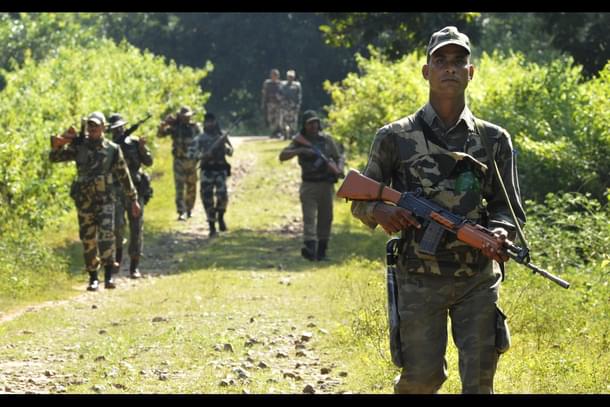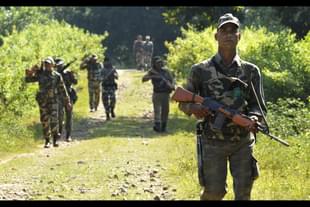News Brief
India’s Biggest-Ever Anti-Naxal Operation: Security Forces Eliminate 31 Naxalites
Arjun Brij
May 15, 2025, 10:23 AM | Updated 10:23 AM IST
Save & read from anywhere!
Bookmark stories for easy access on any device or the Swarajya app.


In what has been hailed as the most extensive anti-Naxal operation in the country’s history, security forces have killed 31 Naxalites, including 16 women during a 21 day campaign on Karreguttalu Hill (KGH) along the Chhattisgarh–Telangana border.
The operation, led jointly by Chhattisgarh Police and Central Armed Police Forces, marks a significant breakthrough in India’s resolve for a “Naxal-free India.”
Announcing the achievement on X, Union Home Minister Amit Shah said, “Karreguttalu Hill, which was once ruled by red terror, now proudly hoists the tricolour.”
He added, “Our security forces completed this biggest anti-Naxal operation in just 21 days, and it is a matter of immense pleasure that there were no casualties among the security forces during this operation.”
He also reiterated the government’s commitment: “We are determined to eliminate Naxalism from the roots… India will be Naxal-free by March 31, 2026.”
The operation, conducted between 21 April and 11 May, involved 21 encounters and resulted in the destruction of 214 Naxal hideouts, seizure of 450 IEDs, 818 BGL shells, and over 12,000 kg of ration supplies, according to the official statement.
Intelligence-led efforts included aerial surveillance and multi-agency coordination. So far, 28 of the 31 slain Naxalites have been identified, with bounties totalling Rs 1.72 crore.
According to security officials, KGH was the headquarters for key Naxal outfits including PLGA Battalion 1, CRC Company, and the Telangana State Committee.
Over 300 armed cadres had taken refuge in the rugged terrain, once considered impregnable.
A total of 18 personnel from CoBRA, STF and DRG were injured in IED blasts but are now stable. Despite the extremely harsh terrain and temperatures over 45°C, the morale of our forces remained high, said officials at a joint press briefing.
This landmark operation reflects the dramatic shrinking of Naxal influence zones. From 35 most-affected districts in 2014, only six remain in 2025.
Similarly, Naxal-related incidents have reduced from 1,080 in 2014 to just 374 in 2024, showcasing the long-term impact of persistent security and development efforts.
With over 320 security camps and 68 night-landing helipads now established in Naxal-affected states, the government’s emphasis remains on infrastructure, governance, and economic inclusion as pillars of counter-insurgency.
Arjun Brij is an Editorial Associate at Swarajya. He tweets at @arjun_brij





